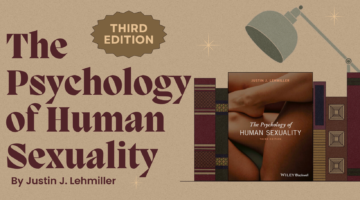Are Porn Actresses “Damaged Goods?”
December 17, 2012 by Justin Lehmiller
Women who appear in pornographic films are viewed negatively by society. For instance, both male and female college students rate porn actresses as having more negative traits and characteristics than mainstream movie actresses and women in general [1]. The only group of women porn actresses are rated more favorably than is prostitutes. In addition, it is widely believed that porn actresses come from dysfunctional home environments characterized by sexual abuse and drug addiction [2]. Such findings suggest that women who have sex on film are thought to be damaged goods, meaning that they are seen as having traumatic backgrounds and poor psychological health. But is this stereotype true? A recent study published in the Journal of Sex Research suggests not.
In this study, researchers compared 177 women who had appeared in at least one pornographic movie to 177 women who had never worked in the adult film industry [3]. The samples were matched for age, race, and marital status to make them as comparable as possible. All of the women completed the same survey, which inquired about their sexual history, past alcohol and drug use, and their current psychological health.
Results indicated that the two groups of women did not differ in likelihood of experiencing childhood sexual abuse; however, their sexual histories differed in other ways. Specifically, porn actresses began having sex about two years younger than the matched sample (age 15 vs. age 17, respectively). In addition, porn actresses reported a larger number of sex partners in the past year (9.6 vs. 1.5) and in their entire lifetime (74.8 vs. 5.2) relative to the comparison group. It is important to point out that these numbers do not reflect on-camera sex partners—thus, these are the number of partners women had outside of work. Porn actresses also reported greater concern about contracting sexually transmitted diseases than women in the matched sample, which makes sense given the dramatic difference in average number of sexual partners.
With respect to alcohol and drug use, a higher percentage of porn actresses (23.7%) reported past problems with alcohol use compared to the matched sample (14.5%). In addition, porn actresses were significantly more likely to have used ecstasy, cocaine, heroin, methamphetamine, and six other drugs than the comparison group.
Finally, in terms of psychological health, porn actresses reported having higher self-esteem and greater sexual satisfaction then women in the matched sample. Overall, both groups of women felt positively about themselves and were sexually satisfied on balance; it was just that the porn actresses scored slightly higher on these measures. Surprisingly, there were no differences in body image between the two groups, so that does not seem to be what is driving the findings. Although we cannot say for sure why porn actresses reported better psychological health, the authors of the research speculate that it could be a function of their job providing greater sexual freedom and opportunity.
To sum it up, the widespread damaged goods stereotype about porn actresses does not hold up in most regards. Women who appear in adult films are no more likely to have been victims of sexual abuse, and they do not have poor psychological health; in fact, they may feel slightly better about themselves than the average women. That said, porn actresses appear to engage in a greater number of risky behaviors, including having a substantially higher number of sexual partners off film, as well as more problems with alcohol and drug use. Thus, while porn actresses may have some unique health issues and concerns, in most ways, they are actually pretty similar to women who work outside the adult film business.
Want to learn more about The Psychology of Human Sexuality? Click here for a complete list of articles or like the Facebook page to get articles delivered to your newsfeed.
[1] Polk, R. K., & Cowan, G. (1996). Perceptions of female pornography stars. Canadian Journal of Human Sexuality, 5, 221–229.
[2] Evans-DeCicco, J. A., & Cowan, G. (2001). Attitudes toward pornography and the characteristics attributed to pornography actors. Sex Roles, 44, 351–361.
[3] Griffith, J. D., Mitchell, S., Hart, C. L., Adams, L. T., & Gu, L. L. (in press). Pornography actresses: An assessment of the damaged goods hypothesis. The Journal of Sex Research. doi: 10.1080/00224499.2012.719168
Image Source: 123rf.com
Other Articles You Might Like:

Dr. Justin Lehmiller
Founder & Owner of Sex and PsychologyDr. Justin Lehmiller is a social psychologist and Research Fellow at The Kinsey Institute. He runs the Sex and Psychology blog and podcast and is author of the popular book Tell Me What You Want. Dr. Lehmiller is an award-winning educator, and a prolific researcher who has published more than 50 academic works.
Read full bio >

